Saint Patrick’s Day Snake Parade
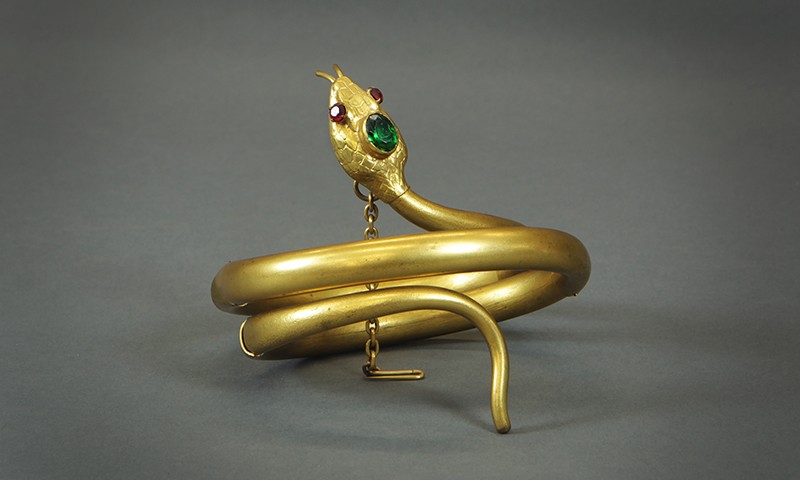 |
| Armlet, c.1885 Paris, France Gold, emerald and stone; 5 1/2 x 4 3/8 x 4 1/8 in. 2884 Gift of Mr. & Mrs. James Willis Rice |
Balancing the Scales
While St. Patrick’s Day has evolved over time to take on a character of its own, the original Saint Patrick was canonized as the patron saint of Ireland for—among many other feats—purging Ireland of its resident snake population. While evidence seems to weigh heavily against this having been more than a metaphorical extermination, it has infiltrated popular culture as the kind of squirreled-away knowledge trivia buffs might mention after a few too many green-dyed drinks. In the Bowers Blog’s own inverted way, this week we celebrate the holiday by taking stock of eight cultures who for better or for worse never received St. Patrick’s serpent removal services.
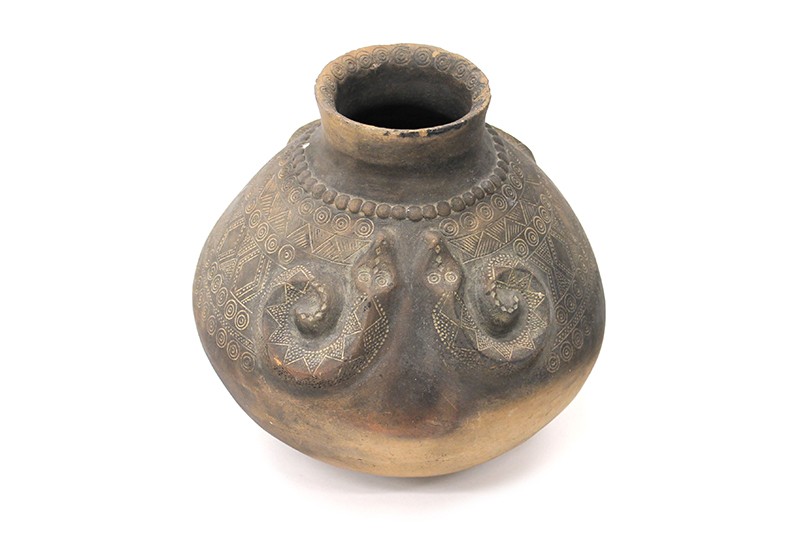 |
| Vessel with Snake Motifs, 18th Century Paiwan culture; Pingtung or Taitung County, Taiwan Clay and wood; 15 x 11 1/2 in. 2017.11.28-.29 Gift of Anne and Long Shung Shih |
Raising the Snakes
St. Patrick’s pied piping would have been especially offensive for the Paiwan of southern Taiwan, for whom snakes were progenitors. The style of pottery seen in this vessel was traditionally made by the Paiwan from the Neolithic era up until the last few centuries when the technique was lost. Some vessels are male or female, with male vessels usually denoted by the presence of snakes. The Paiwan believed that they were descended from a woman named Tsil who fell in love with a viper that could take the form of a man. The result is that the snake motif is used throughout almost all Paiwan arts.
 |
| Basket, late 19th to early 20th Century Probably Cahuilla culture; Southern California Willow, juncus, sumac shoot and deer grass; 4 3/4 x 51 in. 2002.14.4 Gift of William Moran |
Jig-Flattened
This coiled basket was likely made by the Cahuilla culture of inland Southern California. This basket features a geometric rattlesnake composed of its characteristic diamonds and woven from dyed juncus stalks. Rattlesnakes are commonly found in the California desert and along with other local animals the Cahuilla often incorporated rattlesnake designs on baskets. In the origin beliefs of the Cahuilla, the rattlesnake was originally non-poisonous but was given the ability to defend itself when a man began to dance on it.
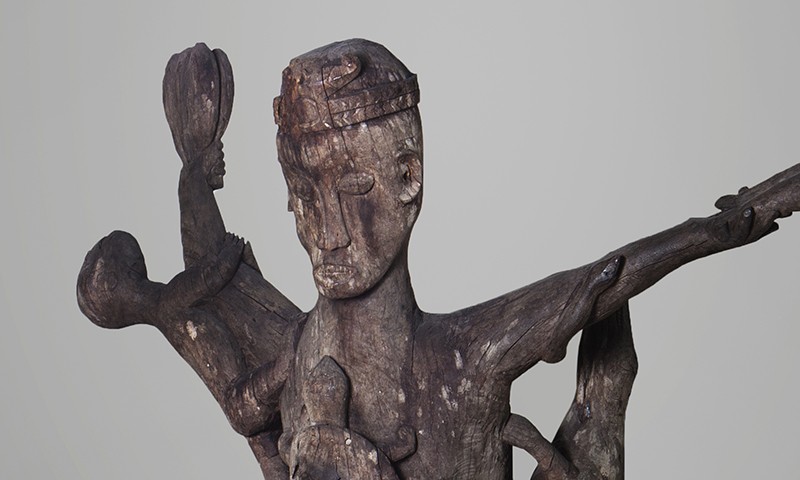 |
| Ancestral Sculpture (Hampatong), c. 1930 Ngaju or Benoa Dayak culture; Borneo, Kalimantan Tengah (Central Kalimantan) Province, Indonesia Ironwood; 67 × 48 × 30 in. 2015.20.1 Gift of Mr. Mark Johnson |
Rattling the Spirits
Hampatong is a general term used to describe sculptures of various size that protect villages, fields, community spaces and other important locations from dangerous spirits and ill will. Most hampatong are purposefully designed to be as menacing as possible—their primary tool in scaring off evil. This statue, likely a venerated ancestor, is surrounded by many animals including a snake travelling along the figure’s left arm. These animals function less as independent motifs, than in unison with each animal enhancing the figure’s power and status within the community.
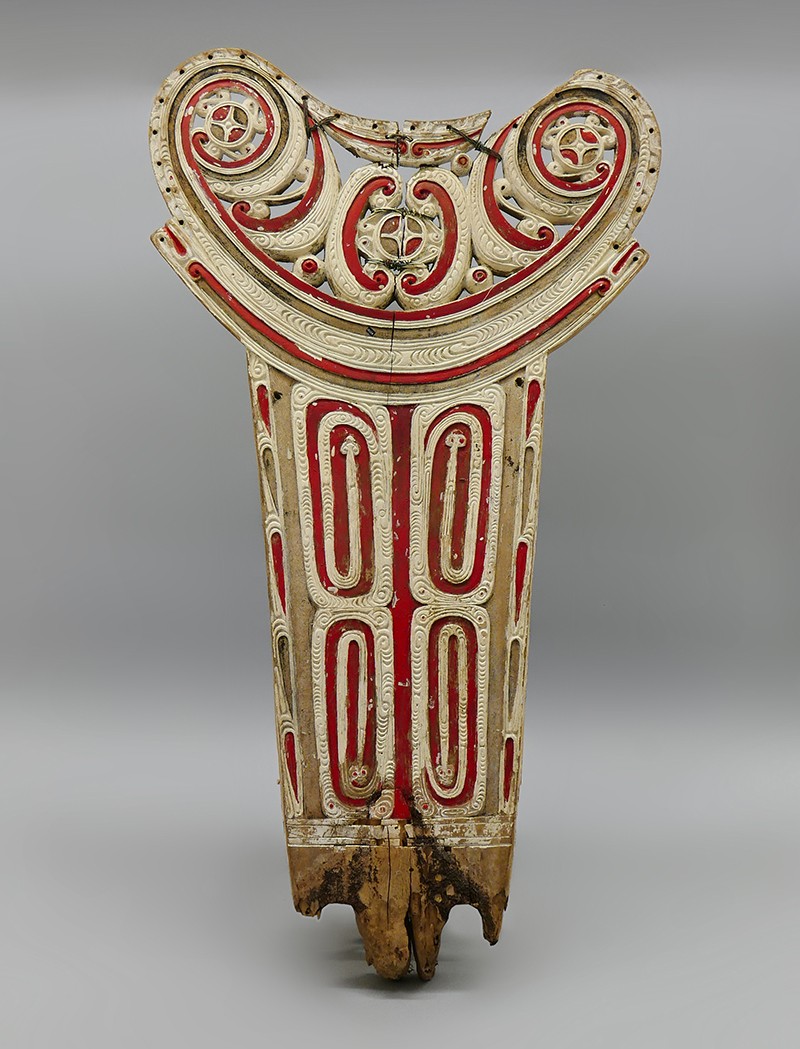 |
| Splashboard (Lagim), early to mid 20th Century Massim culture; Woodlark Island, Milne Bay Province, Papua New Guinea, Melanesia Wood, metal and pigment; 37 × 21 1/2 × 2 in. 2018.14.27 Anonymous Gift |
Thought Worm
Splashboards are an important section of the canoes used for Kula trade voyages in the Milne Bay Province of Papua New Guinea. Splashboards from the Woodlark Islands tend to feature this specific pattern of four snake motifs along the lower portion of the splashboard. Animal designs on splashboards are thought of as tools to interpret a deeper interconnected meaning between carver and craft. The snake (mwata) motifs found on this splashboard symbolically stands for designs slipping into the mind of the carver and onto the carving itself. The mwata is often associated with power and attraction, as it sheds its old skin for new skin, much like Kula myth warriors shedding their skins to attract valuable offerings.
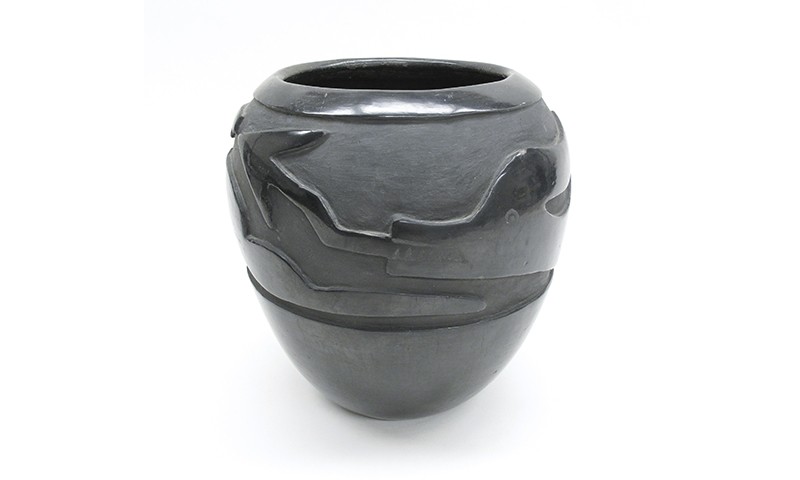 |
| Jar with Avanyu Motif, c.1940 Santa Clara Pueblo; New Mexico Clay; 9 x 8 3/8 in. 95.71.13 Gift of Mr. and Mrs. Len and Toni Wood |
Slithering River
The snake seen on this example of Santa Clara blackware is Avanya, a horned-serpent god revered with some trepidation by the Tewa-speaking Native Americans of New Mexico’s Santa Clara Pueblo. First traced back to Mimbres pottery of the 11th Century, the deity is seen as emblematic of many non-tangential things such as colors and directions, but first and foremost he is the god of water. In both times of flood and drought he is looked to as the cause. During the revitalization of Santa Clara pottery in the 20th Century, Avanaya became a popular motif. He can be depicted in a more realistic form such as what is seen here, or simply abstracted into a zig-zagging line.
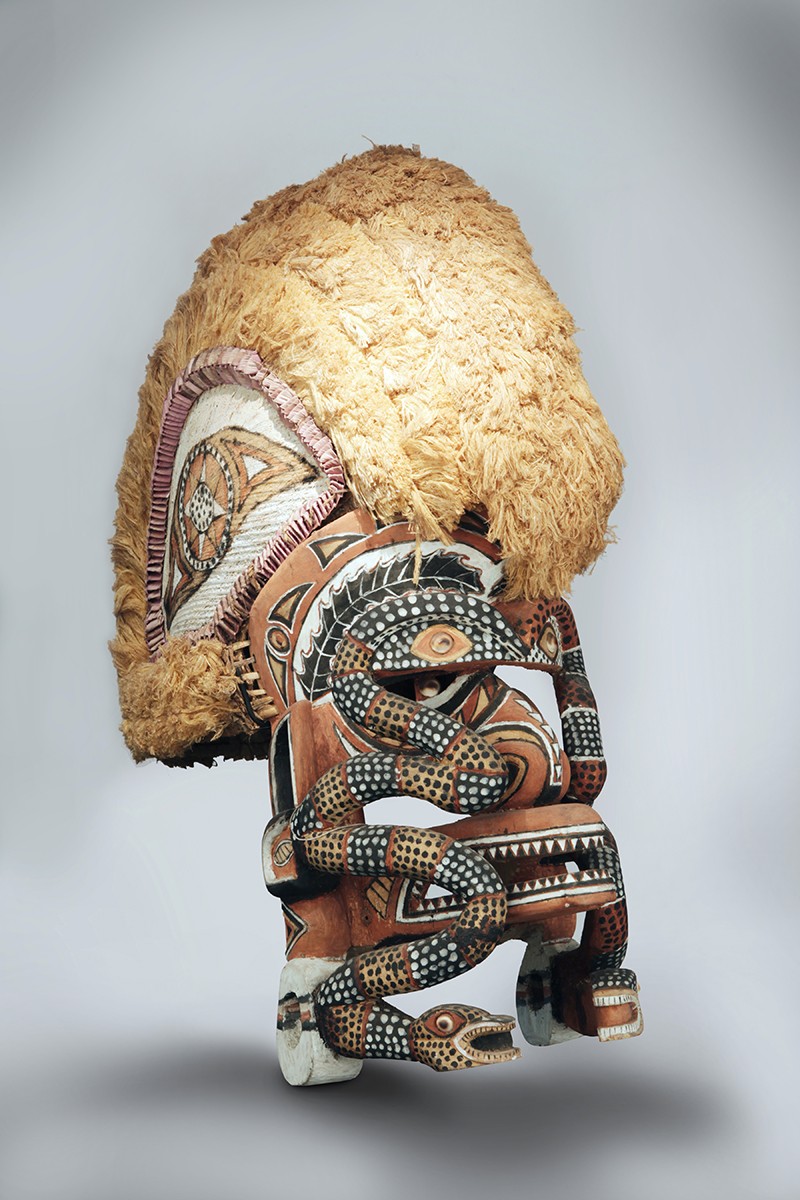 |
| Mask (Tatanua), 20th century New Ireland Province, Papua New Guinea, Melanesia Wood, paint, cane, fiber and operculum; 29 1/2 x 26 3/4 x 10 1/2 in. L.2010.4.7 Loan courtesy of Gayle and Edward P. Roski |
Mostly a Dance Partner
The Malagan carving tradition of Papua New Guinea’s New Ireland Province relies heavily on animal motifs, not the least of which is the snake. In this mask we see two polychrome serpents descending from the mask’s brow in usual, tortuous fashion. What is surprisingly atypical is that within the Malagan carving tradition there is no codified meaning for the use of animal symbols. While the snake may be a clan totem of a specific group of New Irelanders, making a generality about its importance would be incorrect. It is worth noting though that in some funerary dances during which this mask would be worn, the dancers imitate the movements of snakes.
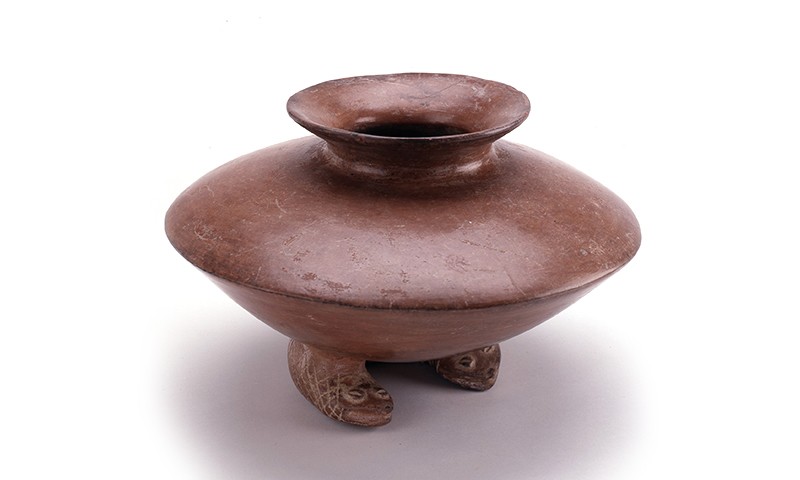 |
| Vessel with Double-headed Snake Base, c. 100 B.C.-600 A.D. West Mexico Shaft Tomb culture; Colima, Mexico Ceramic; 6 5/8 x 11 in. F79.82.1 Gift of Herb Hansen |
Eternal Resting Hiss
This funerary vessel with a base in the shape of a double-headed, coiled snake hails from the shaft-tombs of Western Mexico. Interestingly, the snake base was evidently formed separately from the remainder of the vessel. Within Mesoamerican societies the double-headed serpent is a symbol of the dual-natured vital force that animates and forms all things. The most fundamental principle was the underlying duality of physical reality. This is reflected in the division of species into male and female forms and in the basic form of animal bodies into a left side and a right side; a front and a back; a top and a bottom. By making the serpent the support of the vessel the artist is implying that the vital force is the basis and support of all life.
In the Classic Sense
Madame Modjeska was a Polish immigrant, thespian, and beloved Orange County icon who played the titular female role in William Shakespeare’s Antony and Cleopatra in 1898. Her costume heavily featured sculpted golden snakes on both the headband and the armlet. The snake would have allowed the audience to easily associate Modjeska’s character of Cleopatra with her Egyptian kingdom but would have held a double meaning within the context of Shakespeare’s play. In Judeo-Christian tradition, snakes are the de facto symbol of temptation as the devil takes that form to tempt Eve in the Garden of Eden. It would have been clear to the audience that Cleopatra was Marc Antony’s temptation. Without a doubt it would have been snakes’ association with the devil that led to any St. Patrick-driven Irish snake migration: a lighthearted consideration for this upcoming St. Patrick’s Day!
Text and images may be under copyright. Please contact Collection Department for permission to use. References are available on request. Information subject to change upon further research.

Comments